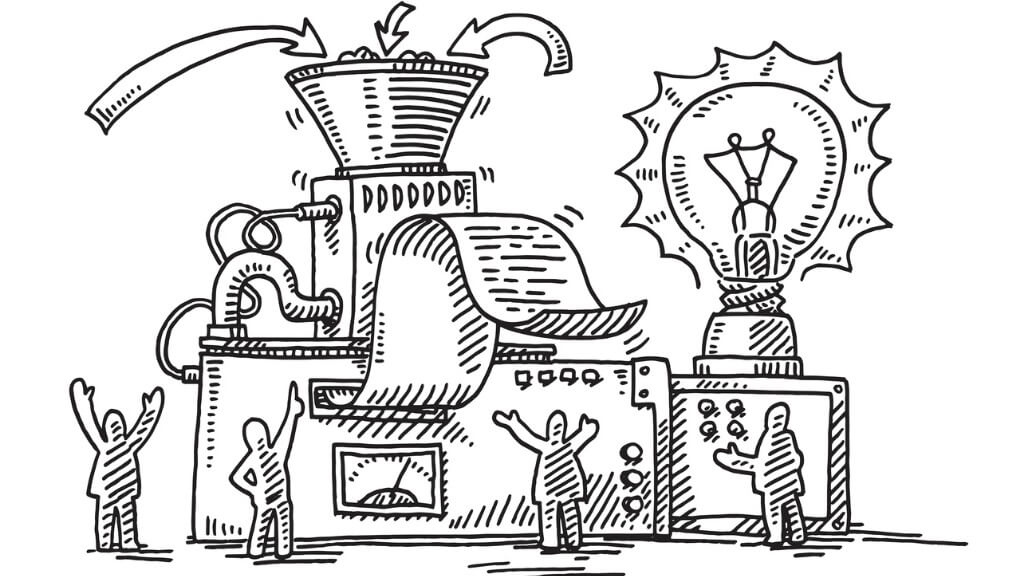The Evolution Of The Asset: Why Connected Industrial Equipment Is Crucial

The late, great Sir Terry Pratchett, once said, “It’s still magic, even if you know how it’s done.” One area in particular that’s been steadily getting smarter is our industrial equipment assets.
What was once a blind, disconnected and ambiguous machine can now give us visibility and insight into how products and services are consumed. It can diagnose itself if its parts are wearing thin, and even order new parts and schedule a technician’s service call.
Connected and intelligent assets are now central to modern business thinking – and more importantly to today’s business models.
Of course, not everyone’s equipment assets are at the cutting edge. Three main factors hindering legacy equipment manufacturers from delivering the right levels of service are well documented – the assets are owned and managed on-site, the assets are not adequately connected, and visibility is lost through channel-owned sales and customers.
To some extent, these problems were understandable, in 2019, when there was less pressure to change and confront the age-old problem of managing legacy investments.
Some firms were reluctant to shift from traditional sales and service models because they either had too much tied-up or they were culturally unable to manage a shift in thinking. But it was just building up a problem that was waiting to happen and of course, it did.
What the pandemic has exposed is both the inefficiencies and impracticalities that can arise from a lack of asset connectivity. As field service teams were forced into skeleton services, the challenge of maintaining machines and devices became overwhelming. Something had to give, either the uptime and continuity of systems or the mental health of engineers. No doubt, in some cases, it was both.
For some this represented an opportunity to shift to remote servicing, where possible, to minimise risk to engineers but also manage resources more effectively. As a recent EY report, Why contactless field service presents an opportunity beyond COVID-19 suggests, remote servicing has efficiency benefits but also looks after the wellbeing of field service technicians. Alhough it does demand greater intelligence of assets to really make it work.
For many years now, the value of servitization models have been well argued. Organizations with connected assets can benefit from reduced downtime thanks to tools such as predictive maintenance but they can also benefit from efficiencies. Moving asset costs from capital to operational budgets and focussing on machine continuity and outcomes has been a business revelation.
As a Boston Consulting Group article on the value of outcome-based business models says, “as the focus of creating and capturing value shifts from one-time sales to long-term partnerships, it is driving higher customer retention as well as rapid account expansion. No wonder many CEOs are convinced that deploying outcome-based business models is the best way to win the future.”
This has been a constant message for many years now, but it has taken the shock of the pandemic for it to really sink in. The unprecedented challenges of the past two years have highlighted why service delivery must become more efficient, predictive and prescriptive. At the heart of this is asset data, which is crucial for de-risking service operations and delivering high-margin service offerings.
Against the unpredictability of current economies and markets, organizations need to focus on their customer and asset intelligence to optimize services. Anything else is putting a finger in the air and hoping for the best.
By having complete visibility of asset installed base, service contracts and asset performance, organizations can start to maximize equipment uptime, optimize field service teams and therefore reduce maintenance costs. These are undeniable competitive advantages at a time where resources are being stretched.
By shifting from selling products to adopting outcome-based strategies, organizations can yield quick results that can propel businesses forward, as well as build agility and resiliency into the model.
From accelerating time-to-value to support asset-centric business processes, with pre-configured templates and industry best practices through to maximizing contract attach rates and renewals, by monitoring the install base to ensure warranty-to-contract conversion while delivering on entitlements, organizations can start to realize real value from their services.
For those organizations that were reluctant to change their asset models pre-pandemic, the COVID-19 virus may have done them a favour. Sometimes it takes the shock of the new to really see what is in front of you.
Sumair Dutta is Director of Digital Transformation at ServiceMax.
Thanks for signing up to Minutehack alerts.
Brilliant editorials heading your way soon.
Okay, Thanks!